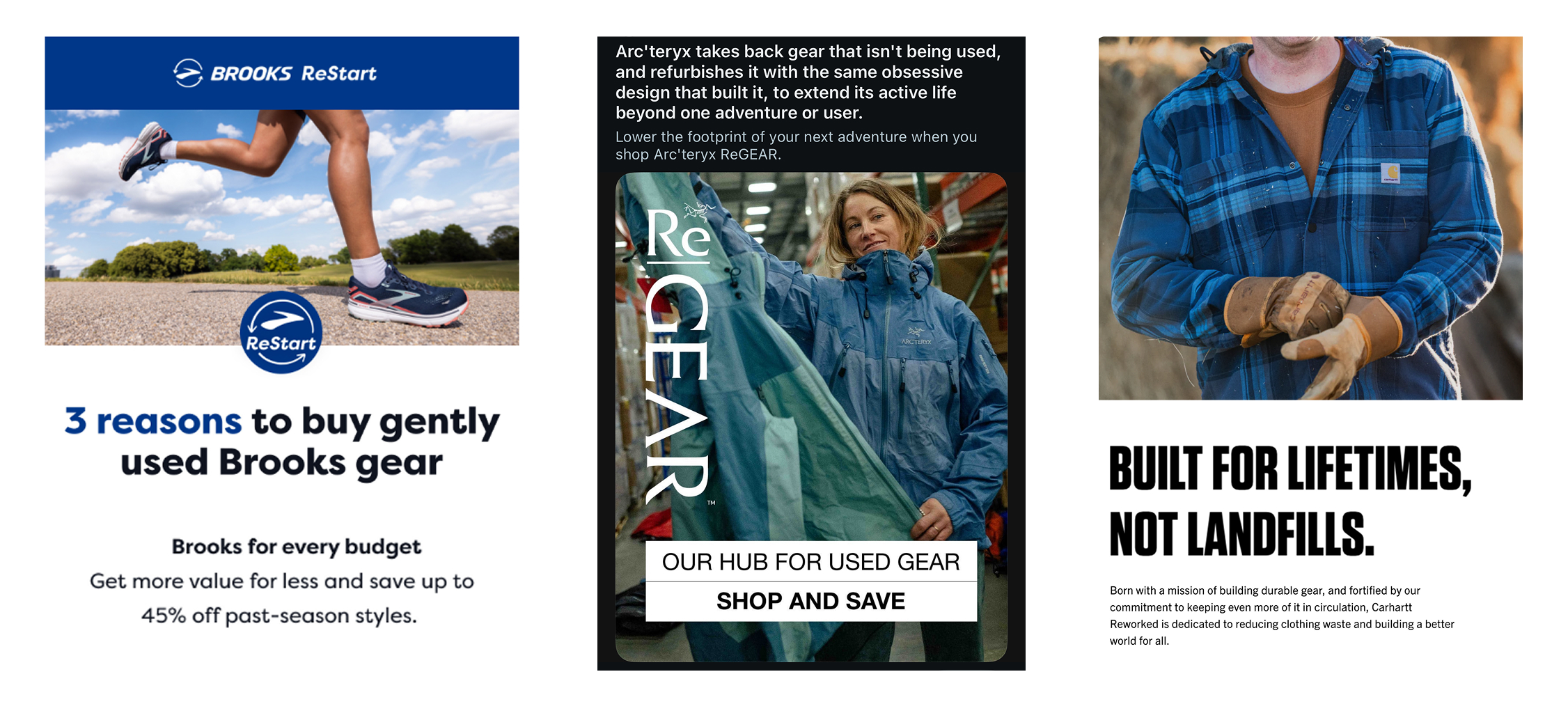The Messaging Strategies Behind Successful Recommerce Programs
The Messaging Strategies Behind Successful Recommerce Programs
5 MINS READ
Recommerce isn’t just another sales channel – it’s an extension of your brand. When positioned effectively, it strengthens customer relationships, reinforces brand values, and creates long-term revenue opportunities. But for resale to succeed, it needs to be strategically framed within your brand ecosystem – not treated as a secondary offering. And the first step? Recommerce messaging.
Resale must be established as a valuable, trusted extension of your brand – let’s look at four ways to build a messaging program that does just that.
Know Your Audience and What Drives Them
Recommerce customers don’t all shop for the same reasons. Some are deal-seekers looking for the best price, while others are sustainability-minded buyers who want to make an eco-conscious choice. Then there are brand enthusiasts – collectors and loyalists who seek out specific products they missed the first time around.
Understanding these motivations helps determines your resale branding so it resonates:
- Value-conscious shoppers want affordability, but they also need confidence in quality. Position resale as a smart financial choice rather than just an opportunity for discounts.
- Eco-conscious consumers are motivated by impact. Highlight the sustainability benefits of recommerce – how it extends product life cycles and keeps items out of landfills.
- Collectors and brand loyalists aren’t just looking for used products. They’re looking for exclusive finds that aren’t available elsewhere. Limited inventory, past-season releases, and niche selections appeal to this group.
A strong resale program doesn’t try to be everything to everyone. Instead, it leans into specific customer motivations and builds messaging around them.
Choose a Program Name That Builds Trust
Your recommerce positioning should feel like a natural extension of your brand, not an offshoot. That starts with the name.
- Leverage your existing brand equity: Patagonia’s Worn Wear and Arc’teryx’s ReGEAR allow customers to instantly associate resale with the quality and trust they expect from the main brand.
- Prioritize clarity over creativity: Simple, descriptive names like REI Trade-In and Eileen Fisher Renew make it immediately clear what the program is about.
- Tie resale into a bigger mission with sustainability messaging: Some brands use resale as part of larger circularity marketing programs. Arc’teryx’s ReBIRD is the umbrella term for their resale businesses, encompassing both resale and repair.
A well-crafted name doesn’t just describe the program. It sets the tone for how customers perceive resale as part of your brand experience.
Craft a Resale Story That Reflects Your Brand Strengths
The most successful programs have a clear and consistent narrative that reinforces their brand identity. Ask yourself: What’s your brand’s take on resale?
- Quality: Some brands use resale to reinforce their product durability and craftsmanship. Arc’teryx ReGEAR highlights longevity, framing resale as proof of product excellence.
- Community: Brands like REI use recommerce to build deeper engagement. Their trade-In program fosters a cycle where customers aren’t just buyers, they’re active participants in the brand ecosystem.
- Exclusivity: Recommerce isn’t always about affordability. Brands like Eileen Fisher position resale as a way to access coveted products that might not be available new.
A recommerce program needs to be more than a secondhand store, it should reinforce what makes your brand unique.

Example Approaches
- Value – Resale appeals to deal-seekers year-round — not just during sales. Brooks Running highlights savings and quality to drive engagement outside promo periods.
- Sustainability – Arc’teryx positions resale as a smarter, impactful way to shop. It’s not just about savings — it’s about keeping good gear out of landfills.
- Durability – Resale reinforces product quality. Carhartt ties its program to gear that’s “built to last,” building trust with both new and returning customers.
Weave Resale Into Your Top-Level Brand Messaging
Resale is a seamless extension of your brand’s core shopping experience. The most effective recommerce programs integrate resale into their mainline site, mirroring the structure, design, and user experience of the primary eCommerce store. Here’s a few ways to do that:
- Make resale easy to find: Visibility matters. The highest-performing resale programs integrate pre-owned shopping into their main site navigation, making it as easy to access as new product categories. Trove partners found that 30-50% of all resale storefront traffic originated from promoting resale on their mainline site. A dedicated tab in the top menu or a featured placement on the homepage drives discovery and engagement.
- Position resale alongside new products: Resale works best when it complements, not competes with, your mainline offerings. Displaying pre-owned options on product detail pages provides customers with alternate colorways, fills stock gaps and offers lower price points without taking them out of the purchase journey.
Recommerce Is a Brand Strategy, Not Just a Sales Channel
The best resale programs reinforce a brand’s values, deepen customer loyalty, and create new reasons for shoppers to engage. Whether you’re leaning into sustainability, product durability, or exclusivity, the key is intentional messaging that aligns with what makes your brand special.
Stay tuned for the next in our Resale Marketing series: Effective Promotions for Resale Programs.
Reach out to the Trove team anytime with questions or support on your branding journey.




